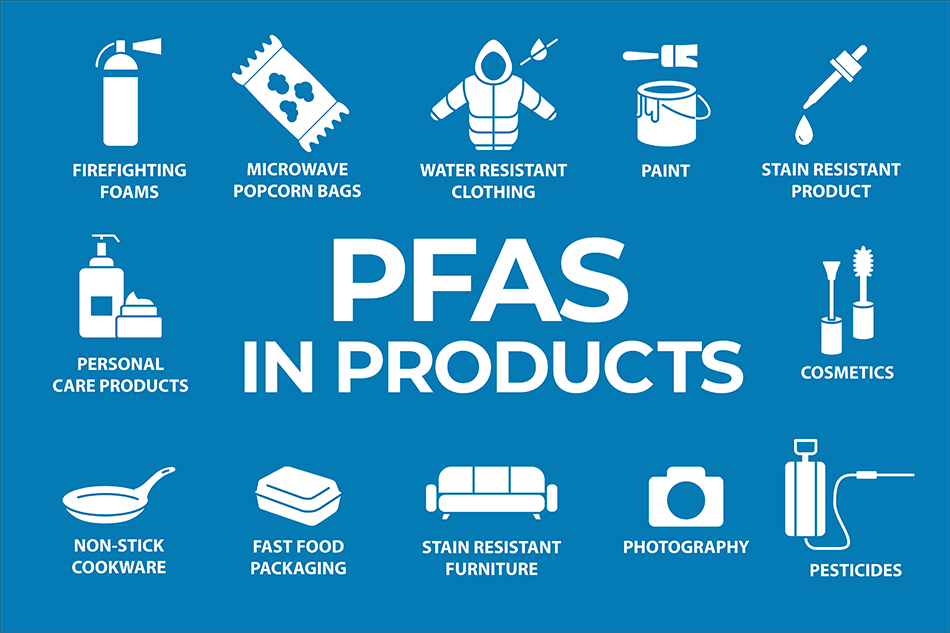
EPA acts twice on PFAS
Submitted by:
Andrew Warmington
The US Environmental Protection Agency (EPA) has taken two separate actions on per- and polyfluorinated substances (PFAS), both being part of its PFAS strategic roadmap, which aims to implement legislation by Q4 to reduce and destroy PFAS contamination in water, air and soil.
Under the National Primary Drinking Water Regulation, the agency has laid down new standards with legally enforceable maximum contaminant levels (MCLs) on five individual PFAS. These are more stringent than previously mooted limits:
* 4 parts per trillion (ppt) for perfluorooctanoic acid (PFOA) and perfluorooctane sulfonic acid (PFOS); and
* 10 ppt for perfluorononanoic acid (PFNA), perfluorohexane sulfonate (PFHxS) and hexafluoropropylene oxide-dimer acid, or GenX
Combinations of two or more of PFNA, PFHxS, GenX and perfluorobutane sulfonate (PFBS) also face limits. However, the short-chain species of PFAS, perfluorobutanoic acid (PFBA), is not included. Some critics noted that, although it is less toxic that C8 compounds, PFBA is harder to remove from water because it does not readily adsorb to surfaces.
Public water systems have three years to begin monitoring and two more to implement compliance systems. An estimated 6-10% of the public drinking water systems subject to the rule will have to act to meet these new standards. Chemical manufacturers are not directly impacted but the EPA believes that they will be under pressure from water companies to release fewer PFAS.
The agency is offering nearly $1 billion to help states implement testing and treatment and to assist owners of private wells. However, the American Water Works Association said that compliance will cost around $1.5 billion/year and will not bring significant health benefits.
The American Chemistry Council (ACC) argued that peer-reviewed research questions “the basis for EPA’s overly conservative approach to assessing one of the health endpoints. Even EPA’s own Science Advisory Board severely criticised much of the underlying science behind the proposed standards.” In addition, the ACC added, “since this proposal was first announced, new real-world data has become available through national monitoring that confirms the rationale for this proposal is based on inaccurate and out-of-date information … We strongly support the establishment of a science-based drinking water standard, but this rushed, unscientific approach is unacceptable.”
A few days later, the EPA announced a final ruling designating PFOA and PFOS as hazardous substances under the Comprehensive Environmental Response, Compensation & Liability Act (CERCLA, or Superfund). The designation requires entities to immediately report releases of over 1 lb (0.4536 kg) within 24 hours to the National Response Centre and state, tribal and local emergency responders.
The agency also set an enforcement discretion policy focused on parties that significantly contributed to the release of PFAS into the environment, including parties that have used them in manufacturing processes, in federal facilities and other industrial parties. A Final Rule will be published in the Federal Register and will take effect 60 days later.
The ACC, noting that PFPA and PFOS have not been produced in the US for over ten years, again questioned the scientific basis for the ruling. “Furthermore, CERCLA is an expensive, ineffective and unworkable means to achieve remediation for these chemicals. CERCLA is fraught with unintended consequences and will likely result in extensive, unnecessary delays for clean-ups,” it said.
While some environmental groups welcomed the move, Public Employees for Environmental Responsibility (PEER) said that the approach failed to address the many PFAS with terminal end products that end up as PFOS and PFOA. “These regulations allow industry to substitute new PFAS variations faster than the EPA can regulate them,” PEER said. Only a total ban would eradicate contamination.
Separately, a US district court has approved a settlement of hundreds of lawsuits by water suppliers against 3M. The company will pay them at least $10.3 billion over the next 13 years to spend on PFAS testing and remediation, plus up to $2.2 billion more if further contamination is found. This follows similar settlements by DuPont, Chemours and Corteva.
This may not be the end of the matter, however. In July 2023, after the agreement was first announced, over 20 attorney generals filed a motion in opposition, arguing that the total fell short of what was really needed and would shift the burden onto local water suppliers and taxpayers.
3M was the first producer of PFAS chemicals in 1956 and the largest overall. It phased out PFOA and PFOS from 2000 once their toxicity and persistence in humans, animals and the environment became clear, but continued to make other PFAS compounds with different properties until 2022.
